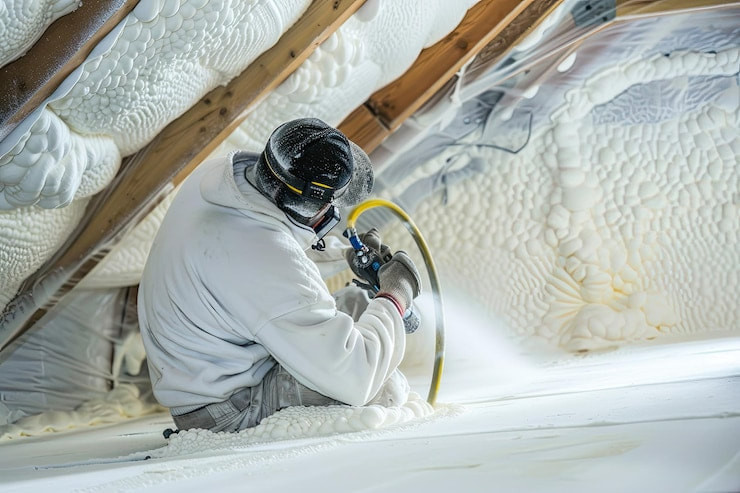views

When it comes to maintaining a comfortable, energy-efficient home, insulation plays a crucial role. While many homeowners focus on attic or wall insulation, the space directly under your house, often referred to as the crawl space or basement, is equally vital. Proper under-house insulation can significantly impact your energy bills, indoor air quality, and the overall longevity of your home. But what exactly is the under house insulation cost, and what factors influence it? Let's dive deep into this essential home improvement.
Why is Under-House Insulation So Important?
Before we discuss the cost, let's understand the immense benefits of insulating the space under your house:
- Energy Efficiency: A significant amount of heat can be lost or gained through an uninsulated or poorly insulated crawl space or basement floor. This forces your HVAC system to work harder, leading to higher energy consumption and steeper utility bills. Effective house insulation creates a thermal barrier, keeping your home warmer in winter and cooler in summer.
- Moisture Control: Crawl spaces are notorious for moisture problems. Insulation, especially certain types like closed-cell spray foam, can act as a vapor barrier, preventing moisture from entering your living space. This is crucial for preventing mold growth, wood rot, and pest infestations.
- Improved Indoor Air Quality: Pests, mold, and allergens thriving in an uninsulated crawl space can impact the air you breathe upstairs. Sealing and insulating this area significantly improves indoor air quality, contributing to a healthier living environment.
- Enhanced Comfort: Drafts, cold floors, and fluctuating temperatures can make your home uncomfortable. Under-house insulation helps maintain consistent temperatures throughout your living space, enhancing overall comfort.
- Structural Protection: By controlling moisture and temperature extremes, insulation helps protect the structural integrity of your home from issues like rotting floor joists or foundation damage.
Factors Influencing Under-House Insulation Cost
The under-house insulation cost is not a one-size-fits-all figure. Several key factors contribute to the final price tag:
1. Type of Insulation Material: This is perhaps the most significant factor. Common materials include:
o Batt Insulation (Fiberglass or Rock Wool): Generally, the least expensive per square foot, but can be less effective if moisture is present and often requires additional vapor barriers.
o Rigid Foam Boards: Offer good R-value and moisture resistance, typically mid-range in cost.
o Spray Foam Insulation (Open-Cell and Closed-Cell): While it may have a higher upfront cost per square foot, spray foam offers superior air sealing, moisture resistance, and R-value, often leading to greater long-term savings and benefits. Closed-cell spray foam is particularly robust for crawl spaces.
2. Size of the Area to Be Insulated: Naturally, a larger crawl space or basement will require more material and labor, directly impacting the total under-house insulation cost.
3. Accessibility of the Space: If the crawl space is difficult to access, very low, or cluttered with debris, it will increase labor time and potentially the cost. Tight spaces can make installation more challenging.
4. Current Condition of the Space: Existing insulation removal, mold remediation, moisture issues, or structural repairs needed before insulation can add to the overall under-house insulation cost.
5. Labor Costs: These vary by region and the complexity of the job. Professional installation ensures proper application and maximum effectiveness.
6. Vapor Barrier and Air Sealing Needs: Beyond the insulation itself, proper air sealing and the installation of a durable vapor barrier (especially in crawl spaces) are crucial. These additional steps will factor into the total under-house insulation cost.
7. Geographic Location: Material and labor costs can vary depending on where you live in Canada.
The Spray Foam Advantage for Under-Insulation
At Spray Foam Solutions, we specialize in high-performance foam insulation for attics, and it's often an excellent choice for under-house insulation. While the initial under-house insulation cost for spray foam might be higher than traditional batt insulation, consider the long-term benefits:
- Superior Air Seal: Spray foam expands to fill every crack and crevice, creating an airtight seal that prevents drafts and significantly reduces heat transfer.
- Excellent R-Value: It offers a high R-value per inch, meaning you get more insulating power from less material, especially with closed-cell spray foam.
- Moisture Barrier: Closed-cell spray foam acts as an effective vapor barrier, essential for preventing moisture issues common in crawl spaces and basements.
- Durability: Unlike batt insulation that can sag or become damaged by moisture, spray foam is rigid and long-lasting, maintaining its effectiveness for decades.
- Pest Deterrent: Its dense structure makes it difficult for pests to nest within.
Getting an Accurate Under-Insulation Cost Estimate
To get a precise under-house insulation cost for your specific project, it's crucial to get a professional assessment. At Spray Foam Solutions, we offer free, no-obligation consultations. Our experts will:
1. Inspect your under-house area (crawl space or basement).
2. Assess the current condition and identify any existing issues.
3. Recommend the most suitable insulation solution for your needs.
4. Provide a detailed and transparent quote, breaking down the under-house insulation cost, including materials and labor.
Investing in proper under-house insulation is an investment in your home's comfort, efficiency, and health. While the under-house insulation cost can vary, the long-term savings on energy bills and improved living conditions make it a worthwhile upgrade. Contact Spray Foam Solutions today to explore how we can help make your home more comfortable and energy-efficient!



Comments
0 comment